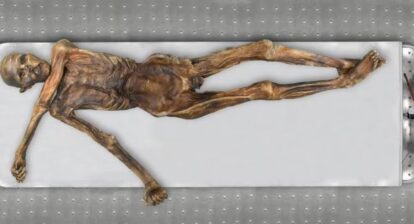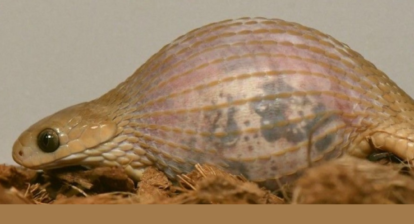Platypuses are weird. The Australian mammals are excellent swimmers, have a duckbill and webbed feet, but bodies that resemble beavers. They lay eggs, but suckle their young by sweating milk. They also have a poisonous spur as a defence mechanism, use electrical sensors on their bills to hunt prey, and are the only mammal with 10 sex chromosomes (5 Y and 5 X in males and 5 pairs of X in females). Oh and a study in 2020 showed that their fur is fluorescent. No doubt platypus provide ample indication that evolution is bizarre.
Scientists have always been fascinated with them ever since they first laid eyes on them in the 18th century. They labled them monotremes – mammals that lay eggs and feed their babies with milk – and which existed many millions of years before modern mammals. There are only two surving families: the platypus and the echidna that together have five species, only found in Australia and New Guinea.
Now a team of scientists, led by University of Copenhagen has mapped the entire genome of the platypus, publishing their findings in the Journal Nature. This has enabled them to understand how some of the characteristics of this bizarre animal have evolved and has increased the overall understanding of mammal – and human – evolution.
According to the new study, the platypus is a mixture of mammals, birds and reptiles, having retained many of its ancestors physical and genetic features. For example, they still continue to have one of the three vitellogenin genes – a gene that allows production of egg yolks. They lost the other two genes around 130 million years ago. For comparison, humans have lost all three genes because we don’t develop yolks but chickens have retained all three.
While in other mammals the vitellogenin genes have been replaced completely with casein genes (which allow for the production of casein protein, a major component in mammalian milk), platypuses have both. So, they also have casein genes and their milk composition is similar to other mammals, including cows and humans. Casein genes have enabled researchers to understand that milk production evolved from a common ancestor that lived 170 million years ago.
Did we say that the platypus are also toothless and use two horned plates to smash food? The study says that they lost their teeth 120 million years ago with the loss of the associated genes.
Although the platypus represent an evolutionary link between mammals and birds, a majority of their sex chromosomes have more in common with birds than mammals. Previously, scientists discovered that the venom used in the ‘spur’ evolved by gene duplication, just like the similar but independant evolutionary pathway of snake venom evolution.
Certainly platypus live a weird life, but you have to admit they are really cool!







